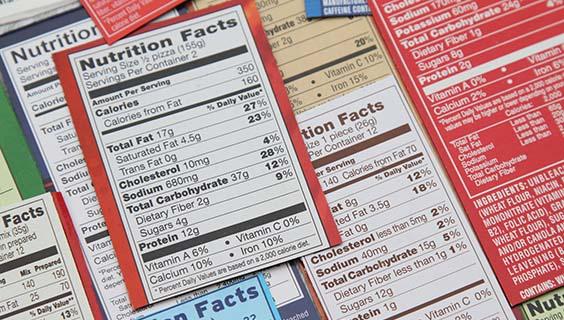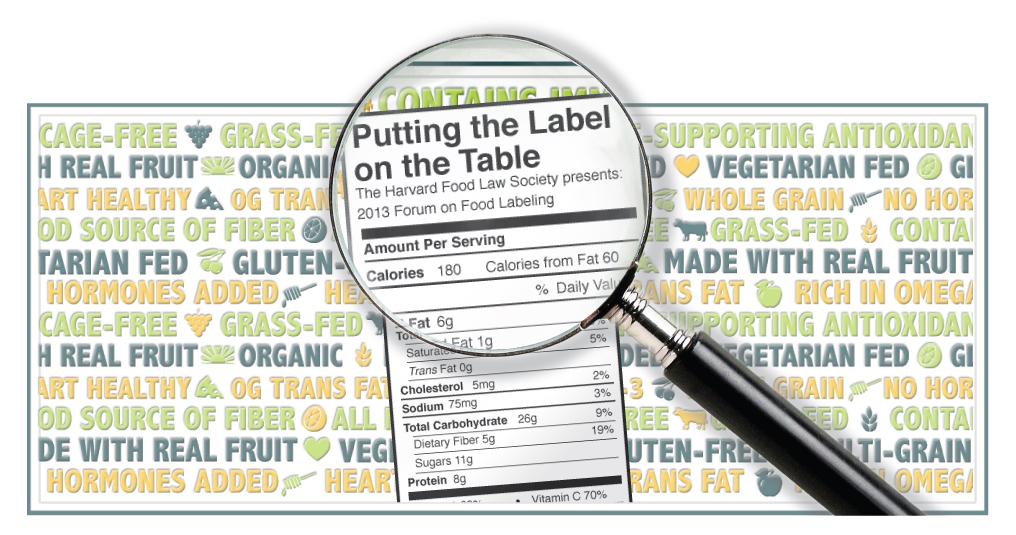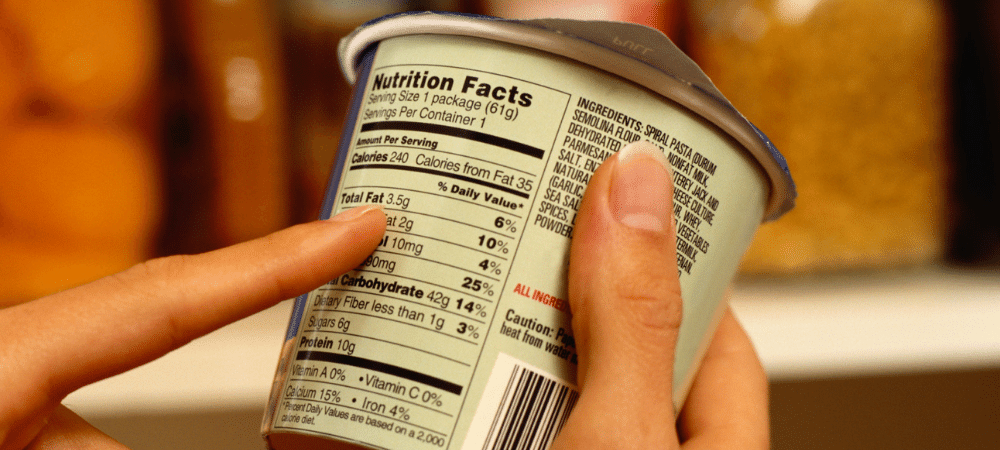What is food labeling?
Food labeling is a way to inform the consumer about the constituent and nutritional content of food. It is the information shown on food products. Food labeling can hence refer to any written or printed tag, brand, mark, visual representation, or other descriptive information on the food product. So, labeling food products encourages the sale of food. The information, which covers things like ingredients, quality, and nutritional value, might be placed with the food or displayed nearby. Labeling provisions under existing food laws are therefore necessary to provide consumers with the correct information about the product.

Nutrition label collage of multiple packaging labels. Nutrition facts show quantities of ingredients in products, including nutrients as per the labeling provisions.
General Labelling requirements
UNDER THE FOOD SAFETY AND STANDARDS ACT, 2006, EVERY PACKAGE OF FOOD SHALL CARRY A LABEL GIVING THE FOLLOWING INFORMATION
- The name, trade name, or description of food contained in the package.
- The names of ingredients used in the product; in descending order of their composition in terms of weight or volume.
- The label should mention both the color and flavor used in the product.
- If producers are using gelatin as an ingredient, they need to make a declaration using the words “gelatin-animal origin”.
- A label should not contain any statement, claim, design, device, fancy name, or abbreviation which is false or misleading in any particular way, concerning the food included in the package or concerning the quality or the nutritive value, or in relation to the place of origin of the food.
- Labeling of pre-packed irradiated foods should be in accordance with the provisions of rules 32 and 42 of the Food Safety and Standards Act.
- The package label or advertisement of edible oils and fats should not use misleading expressions, likewise ‘super-refined’, ‘extra-refined’, ‘micro refined’, ‘double refined’, ‘ultra refined’, ‘anti cholesterol’, ‘soothing to heart’, or ‘saturate’ and ‘fat-free’.
crucial provisions for labeling
- This order regulates the production, quality, and distribution of raw and processed meat food products.
- The Act also makes it mandatory that labels should not use words implying recommendations of the medical profession.
- The manufacturers should pack edible oil in a container, marked and labeled in the manner specified in the Act. The container’s label should necessarily have the brand name, name and address of the packer, description of contents, net mass/ volume, batch number, month, and year of manufacture.
- Every manufacturer shall comply with the set requirements in regard to the packing and labeling of containers of fruit products.
- The labels of the containers should have the name of the product, date of manufacture, net weight/volume, and name and address of the manufacturer.
- Unauthorized use of words, pictures, etc., showing imitation is prohibited.
- Every package which contains monosodium glutamate shall bear the label saying, “This package contains monosodium glutamate. Unfit for infants below 12 months”.
- List of any permitted preservatives and additives added.
- License number and category.
- List of poisonous metals like lead, copper, arsenic, pesticides, sequestering, and buffering agents. In fact, the producers have to ensure that no meat product shall contain MSG in excess of percent by weight.
nutritional labeling
- The manufacturers must include the following information on the label in addition to the nutrition data per 100 g, 100 ml, or per serving of the product; the amount of any additional nutrient for which they are making a nutrition or health claim; the energy value in kcal and the amounts of protein, carbohydrate (specify the amount of sugar), and fat in grams (g) or milliliters (ml).
- It is significant to note that the FSSAI authorities {https://www.fssai.gov.in/} will carefully review any “health claim,” “nutrition claim,” or “risk reduction” claims put on the label.
Conclusion
Given these points, the labeling provisions under the existing food laws ensure the safe utilization of food products. Thus the system of food labeling helps consumers to get knowledge about the food they intend to consume. Correctly following the information provided on food labels protect consumers from unnecessary health hazards. Thus, producers should consume the food as per the packaging and labeling requirements recommended under the order.
Was this helpful?
We're a diverse and dedicated group of professionals with a shared passion for words and a commitment to excellence in the written word. We're here to help you and simplify things for you. With a collective experience of over a decade, our team is one of the best in the business when it comes to explaining how-to's, reviews, and sharp insights on topics related to interviews, technology, marketing, buyers guide, comparisons and more








Very accurate and informative 💜
Very informative and amazing content ❤️great work loved it❤️
Wow
💗💗💗 great
Very well written
Keep up the good work
Well written and informative content..keep it up!! 👏
Very well written 💯 Keep it up!!
The best content one could ever wish for 😇😊 highly appreciable. Collecting all the information and arranging it accordingly is not an easy task at all. Kudos!
Great work di!💜very helpful and informative
amazing content dear 💓
Nice information😁
Amazing ✨
This article is very helpful for everyone 👍☺️
And really very amazing 😍
Good work 👌👍
Really very helpful! I was not aware about this earlier.
Thank for this amazing info. 🔥…really nice..😇
Very informative 🌟
After a long time I have seen this type of article . I love the way you explain everything
Too informative content..
Keep it up andAll the Very best dear ..❤❤
Very well comprehend
This is truly informative✨
It is very difficult to find such combined, good and informative content. We all need some this kind of refreshing content. I appreciate your efforts. Keep it up 👍🏻
Great👌
Well structured & beautifully written Anita!! 💕
Very nice content and helpful for everyone ☺
It is really very helpful article. Keep it up
Very informative ✨
Great detailing and very informative thank you for such type of article.Hope for such more atricles. Well done Anita and keep it up🙌
Insightful and informative content 👌🤓
Got some new information from here😊
Insightful and informative content 👌🤓